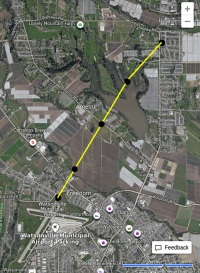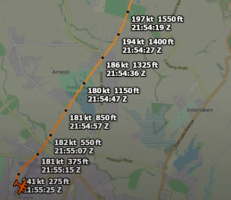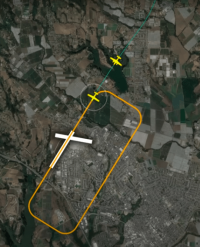- Joined
- Oct 30, 2003
- Messages
- 18,373
- Location
- Santa Maria, California
- Aircraft
- Givens Predator
- Total Flight Time
- 2600+ in rotorcraft
I found this early analysis of the Watsonville Mid Air collision August 18 to be particularly applicable to gyroplanes and low time pilots.
I feel that Richard McSpadden did a very nice job of offering advice on how to avoid conflicting flight paths.
A fast twin Cessna 340 was making a ten mile straight in at high speed and a Cessna 152 was remaining in the pattern making all the proper radio calls.
The Cessna 152 turned base despite the twin reporting a three mile final and turned final despite the twin reporting a one mile final.
I find it disquieting that most of the comments on the video are about who had the right-of-way rather than how to avoid a midair collision.
Three people are dead, and in my opinion both pilots were doing common maneuvers and making common mistakes.
Being aware of the speed differences of various aircraft is critical to making good aviation decisions.
As a flight instructor I try to teach learners to make a mental picture based on the radio reports on the common traffic advisory frequency being aware that many pilots give poor radio.
One of the things I like to do is to have the client point out traffic at the non towered airport based on the CTAF so they get a better understanding of what good radio is and identify pilots who are not giving good radio and being on high alert.
Giving poor radio at a towered airport gets an admonishment from ATC whereas poor radio at a non towered airport may get you killed.
Who had the right of way does not matter to the dead.
I heard a rumor that the Cessna 152 tried to go around and offset to the right apparently forgetting the FAAs guidance on overtaking aircraft. Each aircraft that is being overtaken has the right or way and each pilot of an overtaking aircraft shall alter course to the right to pass well clear. I would offset to the left for this reason.
I feel that Richard McSpadden did a very nice job of offering advice on how to avoid conflicting flight paths.
A fast twin Cessna 340 was making a ten mile straight in at high speed and a Cessna 152 was remaining in the pattern making all the proper radio calls.
The Cessna 152 turned base despite the twin reporting a three mile final and turned final despite the twin reporting a one mile final.
I find it disquieting that most of the comments on the video are about who had the right-of-way rather than how to avoid a midair collision.
Three people are dead, and in my opinion both pilots were doing common maneuvers and making common mistakes.
Being aware of the speed differences of various aircraft is critical to making good aviation decisions.
As a flight instructor I try to teach learners to make a mental picture based on the radio reports on the common traffic advisory frequency being aware that many pilots give poor radio.
One of the things I like to do is to have the client point out traffic at the non towered airport based on the CTAF so they get a better understanding of what good radio is and identify pilots who are not giving good radio and being on high alert.
Giving poor radio at a towered airport gets an admonishment from ATC whereas poor radio at a non towered airport may get you killed.
Who had the right of way does not matter to the dead.
I heard a rumor that the Cessna 152 tried to go around and offset to the right apparently forgetting the FAAs guidance on overtaking aircraft. Each aircraft that is being overtaken has the right or way and each pilot of an overtaking aircraft shall alter course to the right to pass well clear. I would offset to the left for this reason.
Last edited:




